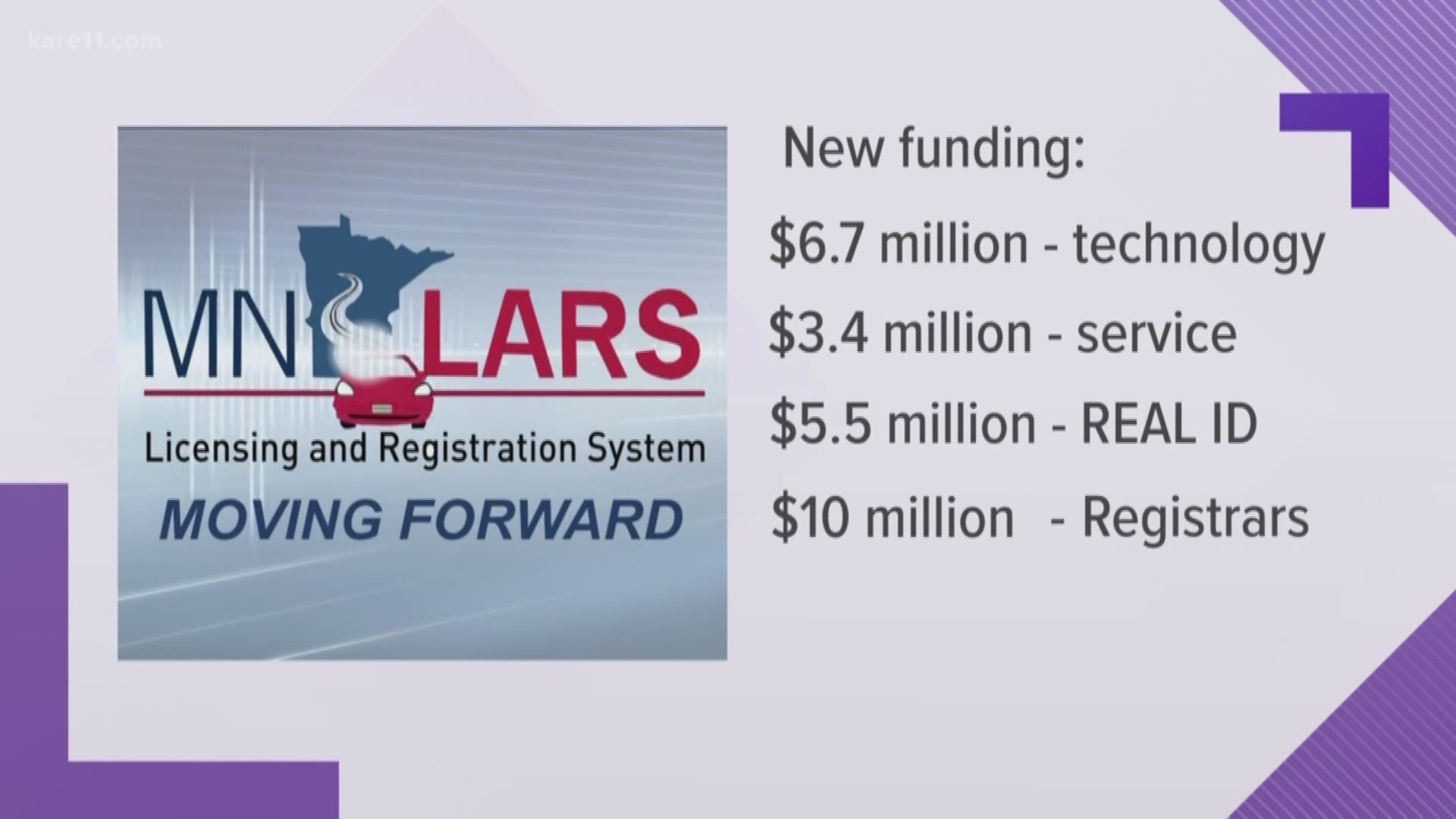ST PAUL, Minn. — There's no doubt the state's licensing and registration system, known as MNLARS, is gradually improving. But it's still lacks the functionality of the 1980s system it replaced.
Fixing those flaws won't be cheap.
The agencies that created MNLARS -- the Dept. of Public Safety and Minnesota IT -- have requested more money in the current fiscal year to pay for in-house staff and contractors to finish the work.
Some lawmakers have run out of patience with the MNLARS project, which has run up a $98 million tab since 2008. But others say the it wouldn't be wise to cut off funding and risk losing staff and contractors who are actively troubleshooting the system.
"Nobody’s happy with how this has worked out. It is frustrating," Rep. Rick Hansen, a South St. Paul Democrat, told KARE.
"But the bottom line is we could stop, and then no more work is done. Or we proceed and finish. I mean that’s really the choice – stop or proceed."
Rep. Hansen is carrying the deficiency funding bill, which passed the House Ways and Means Committee Monday and could make it to a floor vote as early as Thursday.
The bill would provide $6.7 million for MNLARS technology costs, contracts and staff. Another $5.5 million would go toward continued work on the transition to the REAL ID driver's licenses. An additional $3.4 million would go to increase the customer service capacity of Driver and Vehicle Services, or DVS.
Hansen's bill also includes $10 million for reimbursing deputy registrars -- those who own and operate local license bureaus -- for the troubles they encountered during the rocky rollout of MNLARS in 2017.
Many had to deal with overtime pay and staff turnover due to the delays and drop-offs and other functionality issues that plagued transactions involving vehicle registration.
Gov. Walz earlier this month invited the media to a motor vehicle office in Faribault as new software was launched to make it possible to transfer plates to new vehicles, something that was quickly and easily done in the old system.
Walz at the time pledged to make sure the end users -- the deputy registrars and the customers -- would be more involved in the process of making and testing the fixes.
Some lawmakers are hesitant to devote more money to DPS and MnIT for their ongoing work to perfect the system and would rather bring in an outside contractor to do the fix.
"Well the challenge is, if we said that, when would it start? And what would we do in the meantime?" Hansen remarked. "We still have a system that needs to be maintained. We still have a backlog of car registrations and titles."
He pointed out that critical staff and contract workers left the project in 2018 when the legislature initially balked at the request from state agencies for more funding for MNLARS.
At the same time Hansen concedes the deficiency funding bill may not fare as well in the Republican-controlled Senate. Many members of the Senate want DPS and MnIT to find other ways to pay for the repairs.
Hansen's bill calls for the money to come from the General Fund, which is supported by income taxes, sales taxes and other statewide tax sources.
Traditionally the MNLARS project was paid for with special fees on vehicle registrations. The legislature approved a technology surcharge of $1.75 on every vehicle transaction between from 2008 to 2012. That was extended as a $1.00 surcharge from 2013 to 2016.
Beginning in 2011 lawmakers allowed DPS to impose $1.50 fee on other types of transactions and dedicated 20 percent of that revenue to the MNLARS project.

